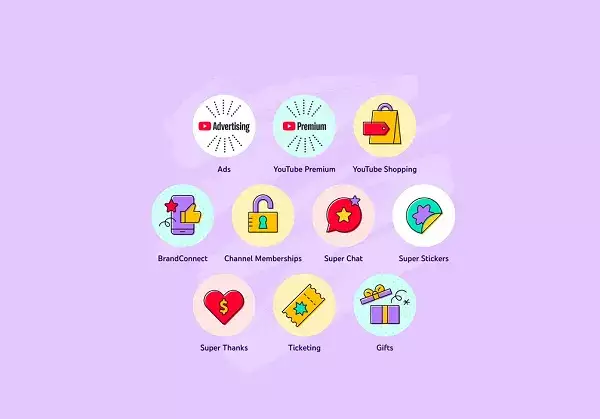In recent years, the digital content creation scene has undergone a seismic shift, propelling platforms like YouTube to the forefront as a bridge between creators and revenue generation. As YouTube actively adapts its monetization mechanisms, it’s clear that there are now abundant opportunities for creators, from established channels to emerging talents. The latest enhancements reflect an understanding of the needs and aspirations of creators, making it essential for them to not only join the platform but also to explore the full spectrum of monetization strategies available.
In-stream Ads: The Traditional Yet Effective Revenue Stream
At the core of YouTube’s monetization offerings lie in-stream ads. As one of the simplest ways for creators to earn money, it requires signing up for the YouTube Partner Program, allowing ads to be placed at strategic intervals in videos. YouTube’s commitment to improving ad placements demonstrates their dedication to optimizing creator earnings. The recent updates that allow for better ad controls—and even automatic detection of appropriate breaks—position in-stream ads as a reliable strategy for revenue generation. It’s a straightforward approach, but one that demands creators engage actively with their audience to ensure video content doesn’t compromise viewer experience.
YouTube Premium: A Win-Win for Creators and Viewers
The YouTube Premium subscription model brings additional income opportunities for creators. With users paying for an ad-free experience, it’s encouraging to know that the revenue is largely channeled back to the content producers. Experimentation with new models, like Premium Lite, further reflects YouTube’s intention to diversify revenue streams for creators. However, as much as this service might enhance viewer experience, it raises questions about balancing monetization with accessibility. Will the increasing reliance on subscription models alienate some segments of the audience? It’s a tightrope walk that creators must carefully navigate.
Entering the World of YouTube Shopping
YouTube Shopping is an innovative avenue for creators looking to integrate their content with commerce. By tagging products featured in their videos, creators can earn a portion of sales directly linked to their content. This synergistic approach not only enables creators to capitalize on their influence but also enhances the viewing experience by blending entertainment with practical shopping conveniences. While this may seem like a bold stride into e-commerce, it necessitates a keen understanding of audience preferences and product placement nuances—something that every savvy creator must prioritize.
Fostering Partnerships with YouTube BrandConnect
BrandConnect establishes an essential connection between creators and brands seeking to leverage influencer marketing. As affiliate marketing options expand to include Shorts, it’s a golden opportunity for creators to broaden their reach and potentially enhance their income. Yet, there’s an underlying implication that necessitates scrutiny: how do creators ensure authenticity while engaging in brand partnerships? This represents a critical balance to maintain, as the integrity of the creator’s brand hinges on transparency with their audience.
Engaging Fans: Channel Memberships and Super Features
Evolving engagement strategies are crucial in today’s competitive content landscape. Channel memberships provide a direct line for fans to support creators financially, establishing a community dynamic that traditional revenue streams can’t capture. Meanwhile, features like Super Chat and Super Stickers add an interactive flair to live streaming, allowing fans to engage with creators in real-time while financially supporting them. Nevertheless, monetization strategies that lean too heavily on fan donations might inadvertently foster a transactional relationship, which can undermine genuine community building.
The Digital Gift Economy: Exploring Unique Avenues
YouTube’s introduction of virtual gifts parallels the burgeoning trend of the digital gift economy. Creators now have the ability to receive financial support through aesthetically pleasing virtual gifts—transforming the simplistic notion of tipping into a more meaningful interaction. However, one has to wonder if this reflects a deeper commodification of relationships within the creator space. Are creators at risk of becoming overly reliant on this kind of support system? Balancing such innovative concepts with authentic audience interactions will undoubtedly be a topic of ongoing conversation among creators.
While YouTube’s monetization strategies provide numerous avenues for revenue generation, the inherent challenges of navigating these pathways cannot be ignored. Creators must possess both strategic insight and an understanding of their audience to thrive in this ever-evolving landscape. At the heart of it all is the question: can art and commerce coexist harmoniously, or will the quest for profit dilute the essence of creative expression?


Leave a Reply